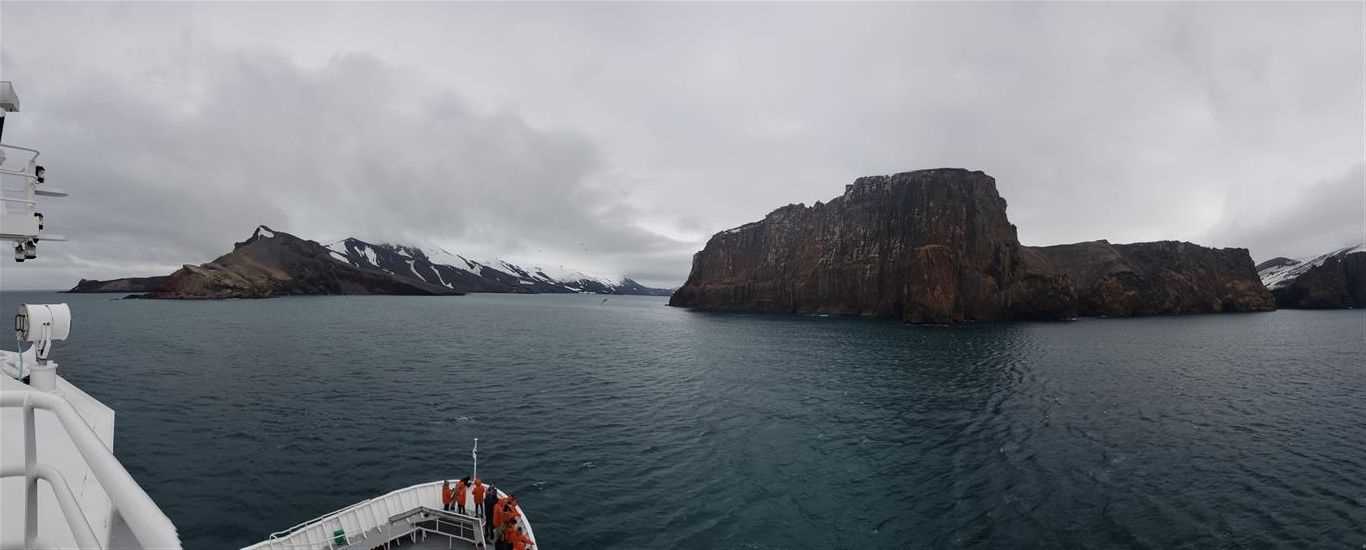We got a wakeup call early as we approached Deception Island and were greeted by several humpback whales and groups of pintado (Cape) petrels. Entering Port Foster via Neptune’s Bellows, we found ourselves in the middle of a caldera—a large crater formed by a cataclysmic volcanic eruption similar to the one that formed Crater Lake in Oregon.
In Whaler’s Bay, a kilometer-wide crater on the side of the caldera, we could see steam rising from the beaches as well as layers of ash trapped within layers of ice. This island hosted a shore-based whaling station between 1910 and 1931, and later on, a British Antarctic Survey station. The British station and a nearby Chilean station were destroyed by an eruption in 1969, leaving only Spanish and Argentinean stations on the far side of the caldera.
Later that morning, as we made our way northeast, naturalist Rob Edwards gave a presentation about working in Antarctica based on his experience working at McMurdo and Palmer stations.
Our afternoon excursion was to the Chilean Prat Base navy meteorological station. This station has 10 year-round staff and an additional 16 in the summer. The officers of the station welcomed us and arranged a tour. We saw the quarters and living conditions of the people who live year-round in the Antarctic. The station doctor showed us his well-equipped infirmary and the meteorologist showed us how he could gather data in all conditions by climbing up out of the building. This strategically located station has powerful communication equipment and helipads allowing it to serve as a rescue center in case of nearby marine or aviation emergencies.
After a magnificent week in the Antarctic, we returned to the ship and began to make our way back across the Drake Passage to Ushuaia.







